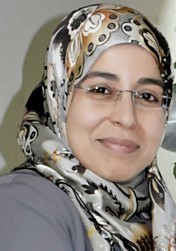In the present study, silver nanoparticles (AgNPs) were synthesized via biological
reduction of silver nitrate using extract of the fungus Fusarium verticillioides (green chemistry
principle). The synthesized nanoparticles were spherical and homogenous in size. AgNPs were
coated with polyethylene glycol (PEG) 6000, sodium dodecyl sulfate (SDS), and β-cyclodextrin
(β-CD). The averaged diameters of AgNPs were 19.2±3.6, 13±4, 14±4.4, and 15.7±4.8 nm, for
PEG-, SDS-, and β-CD-coated and uncoated AgNPs, respectively. PEG-coated AgNPs showed
greater stability as indicated by a decreased sedimentation rate of particles in their water dispersions. The antibacterial activities of different AgNPs dispersions were investigated against
Gram-positive bacteria (methicillin-sensitive and methicillin-resistant Staphylococcus aureus)
and Gram-negative bacteria (Escherichia coli) by determination of the minimum inhibitory
concentrations (MICs) and minimum bactericidal concentrations (MBCs). MIC and MBC values
were in the range of 0.93–7.5 and 3.75–15 µg/mL, respectively, which were superior to the
reported values in literature. AgNPs-loaded hydrogels were prepared from the coated-AgNPs
dispersions using several gelling agents (sodium carboxymethyl cellulose [Na CMC], sodium
alginate, hydroxypropylmethyl cellulose, Pluronic F-127, and chitosan). The prepared formulations were evaluated for their viscosity, spreadability, in vitro drug release, and antibacterial
activity, and the combined effect of the type of surface coating and the polymers utilized to form
the gel was studied. The in vivo wound-healing activity and antibacterial efficacy of Na CMC
hydrogel loaded with PEG-coated AgNPs in comparison to the commercially available silver
sulfadiazine cream (Dermazin®) were evaluated. Superior antibacterial activity and woundhealing capability, with normal skin appearance and hair growth, were demonstrated for the
hydrogel formulations, as compared to the silver sulfadiazine cream. Histological examination
of the treated skin was performed using light microscopy, whereas the location of AgNPs in the
skin epidermal layers was visualized using transmission electron microscopy

